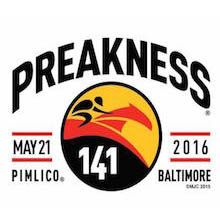 You’ve heard a lot about the Kentucky Derby, but are you as well-versed in Preakness Stakes trivia? As Nyquist prepares for his run at the middle jewel of the Triple Crown, make sure you’re ready to make interesting water-cooler conversation with these 11 facts about next weekend’s Preakness Stakes, which is hosted by Pimlico Race Course in Baltimore.
You’ve heard a lot about the Kentucky Derby, but are you as well-versed in Preakness Stakes trivia? As Nyquist prepares for his run at the middle jewel of the Triple Crown, make sure you’re ready to make interesting water-cooler conversation with these 11 facts about next weekend’s Preakness Stakes, which is hosted by Pimlico Race Course in Baltimore.
1. The Preakness wasn’t always two weeks after the Kentucky Derby. The Preakness has been run before the Derby 11 times, and on two occasions they were contested on the same day. The current order and spacing of the Triple Crown races has held steady since 1969.
2. Five fillies have won the Preakness. Rachel Alexandra was the most recent (2009), breaking an 85-year drought since the filly Nellie Morse won in 1924.
3. Pimlico’s nickname is “Old Hilltop.” The track got its nickname from a rise in the infield that became a preferred race-watching location for fans. The hill met its demise in 1938 when the track removed it.
4. The Preakness hasn’t always been shorter than the Kentucky Derby. The Preakness has been run at 1 3/16 miles since 1925, but prior to that was contested over distances ranging from 1 mile to 1 ½ miles.
5. The Baltimore classic was run in New York for 16 years. In 1890, and from 1894 to 1908, the Preakness was contested at Morris Park in the Bronx, N.Y. (1890) and Gravesend Race Track on Coney Island, N.Y. (1894-1908). It returned to Pimlico in 1909.
6. The Preakness is the older than the Kentucky Derby but often doesn’t get credit for it. It was first run in 1873, predating the Kentucky Derby by two years, but since the Preakness wasn’t run from 1891 to 1893, this year marks the 141st running of the race, while 2016 was the 142nd Kentucky Derby.
7. Winners wear a blanket of black-eyed Susans that are actually daisies. The black-eyed Susan is the Maryland state flower and the official flower of the Preakness winner’s garland, but since black-eyed Susans don’t bloom until June in Maryland, the garland uses daisies or Viking poms with the centers painted black.
8. The race is named for a horse who won the first stakes race at Pimlico in 1870. That horse, Preakness, was named for his owner’s farm which was, in turn, named for a Native American territory. The Minisi tribe originally referred to their area as Pra-qua-les, which later developed into Preakness.
9. The Preakness trophy is the most valuable trophy in sports. The Woodlawn Vase was crafted of silver by Tiffany & Co. and had an estimated value of $1 million in 1983. In today’s dollars that’s more than $2.4 million.
10. The last two Preakness winners, American Pharoah and California Chrome, were also named Horse of the Year. Overall there have been 21 Preakness winners named Horse of the Year the same year they won the race.
11. The Preakness is usually won by a horse who ran in the Kentucky Derby.In the last 26 years, just three Preakness winners did not also compete in the Kentucky Derby.
Original Post Courtesy of americasbestracing.net




